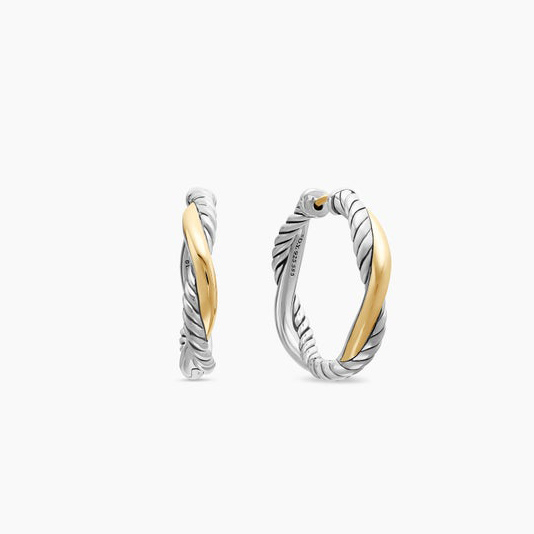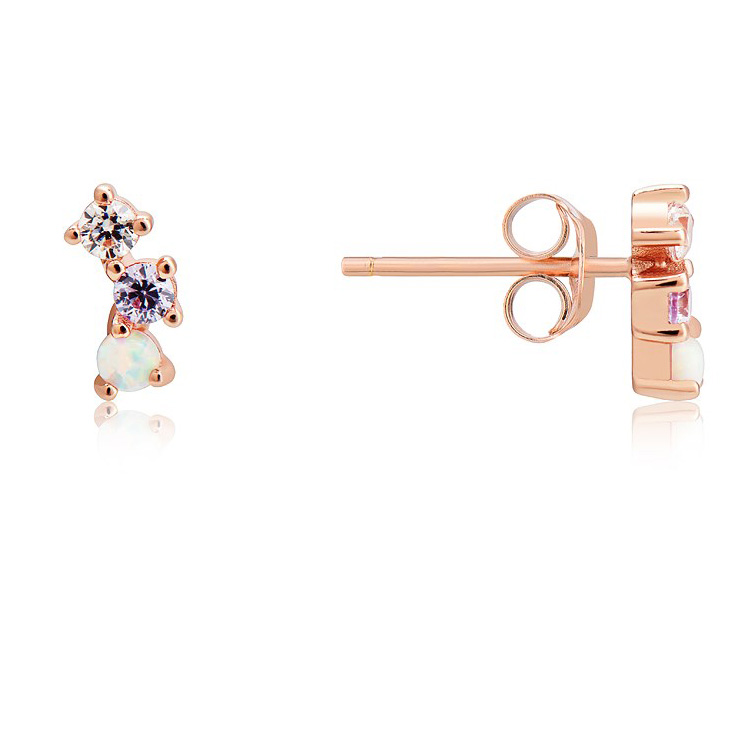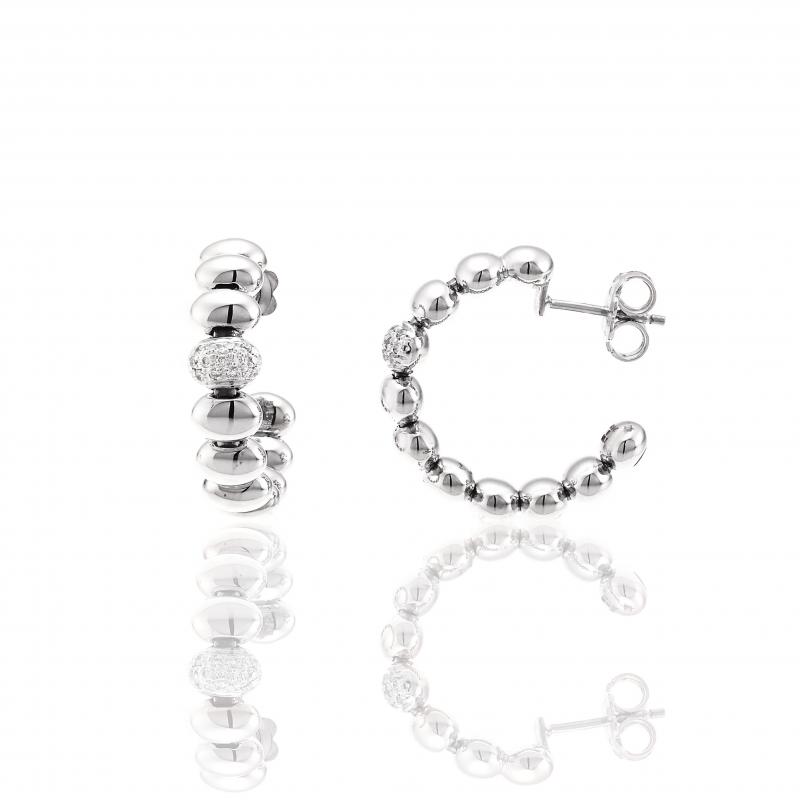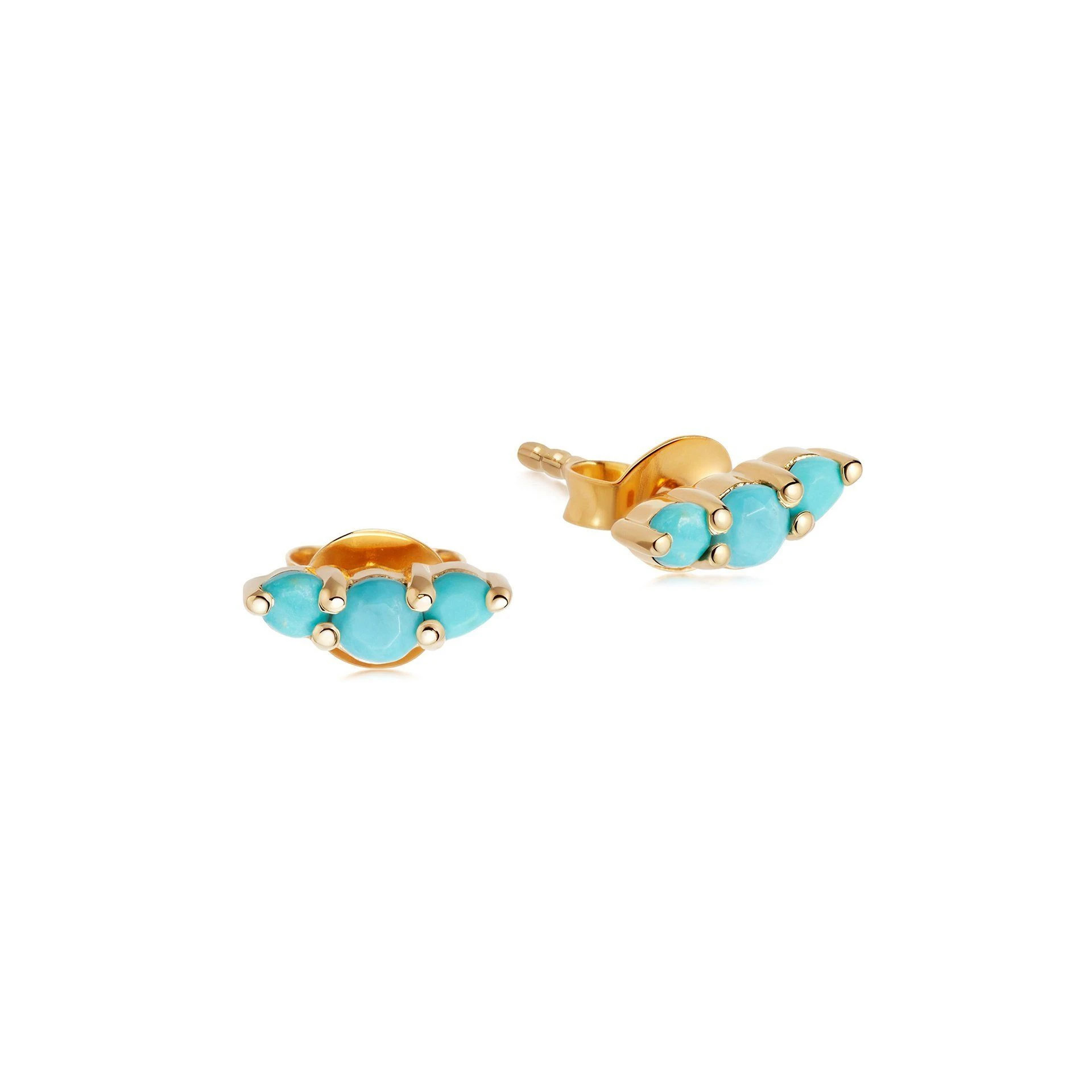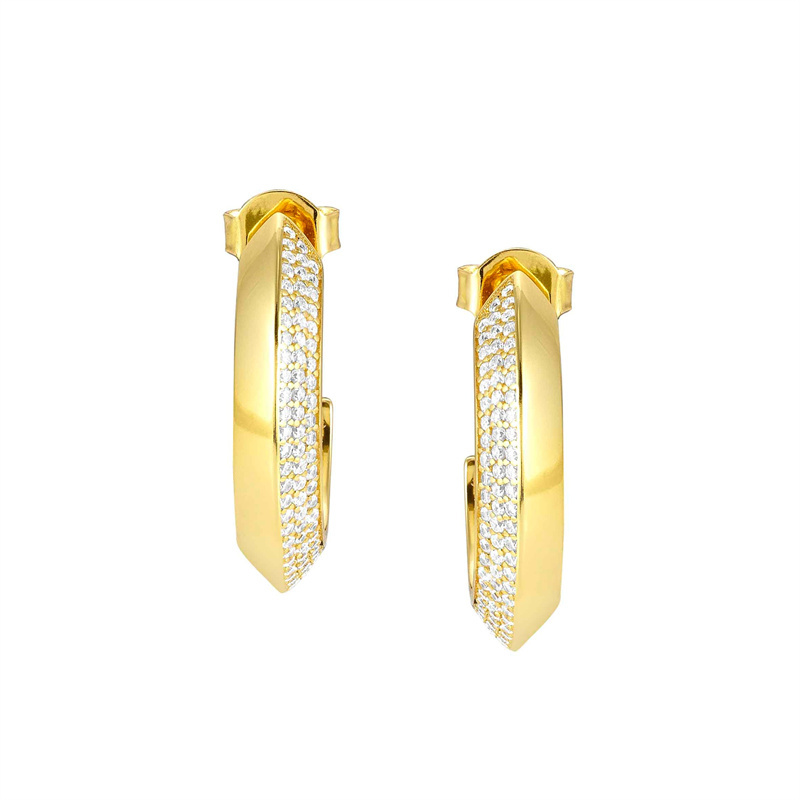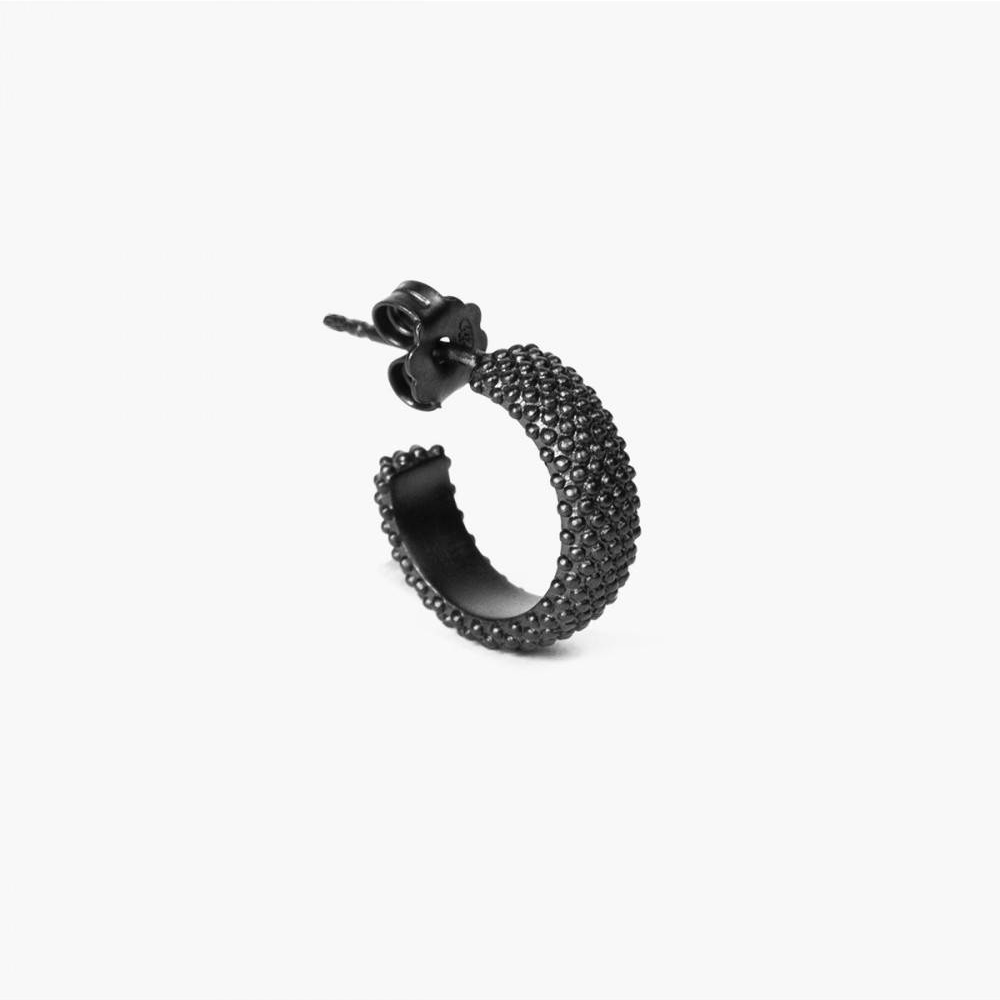JINGYING :the OEM jewelry manufacturer of 925 Sterling Silver Two-Tone Twisted Wire Hoop Earrings
JINGYING :the OEM jewelry manufacturer of 925 Sterling Silver Two-Tone Twisted Wire Hoop Earrings
LET’S GET STARTED : mo@kingjy.com
JINGYING: The Art and Precision of OEM Manufacturing in 925 Sterling Silver Two-Tone Twisted Wire Hoop Earrings
Introduction
In the ever-evolving landscape of fashion jewelry, certain pieces transcend fleeting trends to become timeless classics. Among these, the hoop earring holds a place of honor. A symbol of completeness, eternity, and cultural expression, its simple circle has been reinterpreted across millennia. In the modern market, one of the most sophisticated and sought-after variations is the Two-Tone Twisted Wire Hoop, crafted from 925 Sterling Silver. This design merges the classic form with dynamic texture and contemporary metallurgy, creating a piece that is both versatile and statement-making. At the heart of bringing this specific product to the global market lies a specialized entity: the OEM manufacturer. This article delves deep into the world of “JINGYING,” a hypothetical yet archetypal manufacturer, exploring its role as a master craftsman and strategic partner in the production of 925 Sterling Silver Two-Tone Twisted Wire Hoop Earrings. We will dissect the materials, the intricate manufacturing process, the design philosophy, the rigorous quality control, and the strategic business model that allows JINGYING to excel in the competitive global jewelry industry.
I. Deconstructing the Product: The Anatomy of an Icon
To understand JINGYING’s expertise, one must first appreciate the complexity hidden within the seemingly simple description of “925 Sterling Silver Two-Tone Twisted Wire Hoop Earring.” Each term signifies a critical aspect of the product’s quality, aesthetics, and manufacturing challenge.
1. 925 Sterling Silver: The Foundation of Quality and Trust
The designation “925″ is not merely a marketing term; it is a universal standard of quality and purity. Sterling silver is an alloy composed of 92.5% pure silver and 7.5% other metals, typically copper.
- Why Alloy? Pure silver (999 fine) is too soft for durable jewelry. It would easily scratch, bend, and lose its shape. The addition of copper creates a metal that retains the brilliant, hypoallergenic luster of silver while gaining the necessary strength and resilience for everyday wear.
- The Hypoallergenic Advantage: For a global market increasingly concerned with skin health, 925 sterling silver is a benchmark for safety. Its high silver content minimizes the risk of allergic reactions, making it a trusted choice for consumers and a reliable foundation for brands to build upon.
- JINGYING’s Sourcing: A manufacturer of JINGYING’s caliber sources its silver from certified and reputable refiners. This ensures batch-to-batch consistency in color, workability, and finish, forming the non-negotiable foundation of a superior product.
2. Two-Tone: The Fusion of Aesthetics
The “Two-Tone” finish is a deliberate and sophisticated design choice that significantly expands the earring’s versatility. It involves the strategic application of two different metal colors on a single piece.
- Common Combinations: The most popular two-tone pairing for silver-based jewelry is the combination of the natural bright white of sterling silver with the warm, luxurious hue of yellow gold or the modern, rosy tone of rose gold.
- Achieving the Effect: This is not a simple paint job. It is achieved through a high-precision electrochemical process known as plating or, for a more premium finish, a mechanical process like physical vapor deposition (PVD). The base remains 925 sterling silver, but specific sections are plated with a micron-thin layer of another metal. For a twisted wire, this could mean one wire strand is left in its natural silver state while the other is plated with gold, creating a stunning visual contrast.
- Value Proposition: Two-tone jewelry is a strategic product for brands as it allows a single piece to coordinate with multiple jewelry wardrobes—silver, gold, and mixed-metal—catering to the modern consumer’s preference for versatility.
3. Twisted Wire: The Dimension of Craftsmanship
The “Twisted Wire” element is where artistry and engineering intersect. It transforms a simple metal wire into a dynamic, light-catching sculpture.
- Visual and Textural Appeal: The twisting creates grooves and peaks that play with light, giving the hoop a sense of movement, depth, and texture that a smooth wire cannot achieve. It adds visual weight and complexity without necessarily adding physical weight.
- The Twisting Process: Creating a perfect, consistent twist is a specialized skill. It involves taking two or more wires, often of the same gauge but sometimes different, and twisting them around a central axis with precise tension and rotation. The tightness of the twist—from a loose, wavy spiral to a tight, rope-like effect—defines the final character of the earring.
4. The Hoop: An Enduring Form
The hoop itself is an iconic shape, but its execution requires geometric precision.
- Diameter and Gauge: Hoops come in a vast range of sizes, from small, understated “huggies” to large, statement-making circles. The wire’s gauge (thickness) also varies, influencing the hoop’s durability and visual presence.
- The Closure: Engineering the Circle: Perhaps the most critical functional component is the closure. A poorly made clasp can ruin the aesthetic and security of the earring. For hoops, common closures include:
- Latch/Tongue Closure: A classic and secure method where a wire tongue clicks into a hollow tube on the other end.
- Hinged Snap-Back: A modern, seamless closure where the hoop is hinged and snaps securely into a nearly invisible backing.
- Fishhook/Shepherd’s Hook: An open-ended design that relies on gravity and a curved wire to stay in place.
JINGYING’s expertise lies in integrating these closures so seamlessly that they become an invisible part of the design, ensuring both security and a flawless circular silhouette.
II. The JINGYING OEM Process: From Concept to Client
Original Equipment Manufacturing (OEM) is the core of JINGYING’s business. It means they manufacture products according to the exact design, specification, and branding requirements of another company, which then sells the product under its own brand name. This is a partnership built on capability and trust.
Phase 1: Collaborative Consultation and Design Development
The process begins with a dialogue. JINGYING’s team engages with clients—which can range from nascent jewelry brands to established fashion houses—to understand their vision.
- Client Briefing: What is the target market? What is the desired price point? What is the brand’s aesthetic—minimalist, bohemian, luxury?
- Technical Design and CAD Modeling: Using Computer-Aided Design (CAD) software, JINGYING’s engineers create precise 3D models of the hoop earring. This model allows the client to visualize the proportions, the intricacy of the twist, and the integration of the closure. Modifications are made digitally, saving time and cost before any physical prototyping.
Phase 2: Prototyping and Sampling – The Bridge to Reality
This is the most critical phase for ensuring client satisfaction.
- 3D Printing: A resin or wax prototype is created from the CAD model. This allows the client to assess the physical size, weight, and feel of the earring.
- The “Gold Sample”: Once the prototype is approved, a production sample is handcrafted using the actual materials: 925 sterling silver, twisted to specification, and finished with the two-tone plating. This sample is couriered to the client for final approval on color, finish, texture, and function.
Phase 3: Mass Production – Precision at Scale
Upon sample sign-off, mass production begins. This is where JINGYING’s manufacturing prowess is fully displayed.
- Wire Drawing and Preparation: Sterling silver rods are drawn through a series of progressively smaller dies to achieve the precise wire gauge required for the design.
- The Art of Twisting: This is a specialized step. The prepared wires are fed into precision twisting machines. The key is controlling the speed and tension to ensure every millimeter of the wire has an identical twist pattern. For complex designs, this may involve multiple wires or even pre-plating one wire before twisting to ensure color integrity.
- Hoop Forming: The twisted wire is carefully coiled around a mandrel of a specific diameter to form the hoop shape. This must be done with extreme care to avoid distorting the delicate twist pattern.
- Cutting and End Finishing: The continuous coiled wire is cut into individual hoops, and the ends are finished to prepare for the attachment of the closure mechanism.
- Assembly and Soldering: The closure components are meticulously soldered onto the hoop. This requires high skill to ensure a strong, seamless joint that does not detract from the design.
- Polishing and Finishing: The raw hoops undergo a multi-stage polishing process. They are tumbled in abrasive media to smooth rough edges and then hand-polished or machine-polished to achieve the desired luster—whether a high shine, a matte finish, or a combination that highlights the twist.
- Two-Tone Plating: This is a delicate, electrochemical ballet. Areas not intended to be plated are masked off. The earrings are thoroughly cleaned and then immersed in an electroplating solution. An electric current is applied, bonding a layer of gold (or rose gold) atoms onto the exposed sterling silver surface. The thickness of this layer (measured in microns) is carefully controlled to ensure durability and color consistency.
Phase 4: Impeccable Quality Control (QC)
JINGYING’s reputation is built on reliability. Their QC process is rigorous and multi-stage:
- Dimensional Checks: Verifying the diameter and wire gauge of every batch.
- Twist Consistency Inspection: Ensuring the twist pattern is uniform across all pairs.
- Plating Quality Test: Checking for color accuracy, coverage, and adhesion (often using a salt spray test to simulate wear).
- Clasp Function and Security Test: Repeatedly opening and closing the clasp to ensure longevity and secure hold.
- Final Visual Inspection: Each earring is individually examined under bright light for any surface imperfections before being cleaned and packaged.
Phase 5: Custom Branding and Packaging
As an OEM partner, JINGYING offers comprehensive branding services. The final product can be presented on custom-branded cards, in printed poly-bags, or in elegant boxes with the client’s logo, turning a manufactured product into a branded experience ready for retail shelves.
III. The Business of Manufacturing: JINGYING’s Strategic Position
1. Target Client Profile
JINGYING’s services cater to a diverse B2B clientele:
- Start-up Jewelry Brands: Entrepreneurs who have a design vision but lack the capital and expertise for manufacturing. JINGYING offers low Minimum Order Quantities (MOQs) and hand-holding through the process.
- E-commerce & Dropshipping Businesses: Online retailers who need a reliable supplier for a trending product, often requiring direct shipping and custom packaging.
- Established Fashion Brands: Larger companies looking to outsource a specific line or capitalize on the two-tone hoop trend without investing in new machinery.
- Influencers and Design Collaborators: Individuals seeking to create a signature collection with a unique twist on the classic hoop.
2. Value Proposition and Competitive Edge
In a competitive market, JINGYING distinguishes itself through:
- Material Integrity: An unwavering commitment to genuine 925 sterling silver.
- Technical Mastery: Specialized expertise in the complex processes of twisting and two-tone finishing.
- End-to-End Service: The ability to manage the entire process from CAD design to final packaged product.
- Flexibility and Scalability: Serving both small boutique brands and large retail chains effectively.
3. Navigating Challenges
The path is fraught with challenges that JINGYING must expertly manage:
- Volatile Metal Prices: The costs of silver and gold are subject to global market fluctuations, requiring agile pricing strategies.
- Intellectual Property Protection: Ensuring that a custom design for one client remains exclusive is paramount to maintaining trust.
- Quality Consistency: Maintaining the same high level of craftsmanship across thousands of units is the ultimate test of a manufacturer’s systems and discipline.
Conclusion: The Manufacturer as a Silent Partner in Style
JINGYING, as the OEM manufacturer of 925 Sterling Silver Two-Tone Twisted Wire Hoop Earrings, operates at the crucial intersection of art, science, and commerce. It is the silent engine behind countless brands, the invisible hand that transforms a creative concept into a tangible object of desire. The twisted two-tone hoop is a perfect case study in modern jewelry manufacturing: it appears simple to the wearer, yet its creation demands a symphony of specialized skills, from metallurgy and mechanical engineering to electrochemical precision and aesthetic finesse. By mastering this specific niche, JINGYING does more than produce earrings; it enables trends, empowers brands, and ultimately, adorns consumers with pieces of lasting quality and beauty. In the perfect spiral of a twisted wire and the seamless fusion of two tones, one finds the true signature of a master manufacturer.
